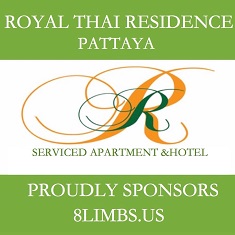above, my short video showing the application of liquid stitches
I’ve written before a kind of “Stitches 101” post, a guide on how to Care for Stitches in Thailand covering all the basics. That’s a good place to start if you have questions about receiving stitches, healing time, training with them, scarring, etc. This post is kind of the update to those basics, like how every time I discover something new about treating knots and bruises on my shins I’ll make a video to update that information.
My stitch count is now up to 129 stitches. That’s a lot and it means I have quite a bit of experience dealing with cuts in different areas of my face/scalp. Something that has been recently added to my routine (yeah, I’ve got a stitch-care routine) is medical grade glue. I never found any liquid band-aid or anything like that in Thai pharmacies, so I just bought a bottle from Russia on Ebay for $5. I keep the bottle in the bag with my wraps, tape, oil and Vaseline for fights so that I always have it, but I don’t ever use it as immediately as still being at the fight.
Basically it goes like this: I get stitches straight out of the ring, the doctor covers his work with some gauze and tape, then I go home and either try to shower around that gauze (not allowing it to get wet), or I just have to take it off and be super careful to re-clean the wound after my shower. Doctors want you to leave that gauze on for 48 hours, which is really good advice and if you are capable of following it, do so. The idea is to create a sterile seal on the wound with a scab or whatever under the clean bandage, so you really don’t want to take it off. Some doctors even stitch it to your face! But I always have blood and Vaseline in my hair from the cut and I can’t handle not cleaning all that up for 48 hours. I just can’t. So, I take a shower, wash the blood and grease out of my hair and don’t let the shower water touch my stitches if I can help it. Then I clean the wound with iodine or rubbing alcohol, let it dry, then apply a layer of the medical grade glue, as I demonstrate in this video. I put it right over the stitches as well, so it creates like a laminate over the whole thing and keeps it dry and clean for a few days at a time. Every now and again the glue will separate from your skin and you need to gently peel it off, clean the stitches and reapply. The glue will stick to the threads of the stitches, so be very gentle as you try to pull that off. And when you’ve removed the stitches, I continue to use the medical glue for a few days after to keep everything clean and take some of the tension off the skin so the scar keeps together.
I’ve found that the medical glue speeds up my surface healing time a lot, seemingly to half the time I was facing before. (Surface healing is very important as only when the wound is closed that infection no longer is a danger, and sweat no longer will slow the healing process.) Previously I might leave the stitches in for maybe 7 to 10 days, depending on how they look. I’ve done this twice now, and these stitches came out day 5, while still remaining conservative. They were completely healed at the surface, closed. Note: even when stitches have closed there is a healing to be done beneath the surface in the face. It will take longer, depending on your skin, the location, etc. It may be 20-40 days before every single sensitivity to the area is lost, though it is common to train and fight before that time. I haven’t conducted any real study of others beyond this brief self-experiment, so there is emphasis on “seemingly” heal faster: stitch location and depth of cut can have a bearing on surface healing time; but I can’t really imagine a case where the additional support of the glue would be a detriment. I’ve also absolutely seen better looking scars on the other side of glued stitches than non-glued. It seems to reduce any puckering between stitches and small skin pull-aways which can influence the scar, and sometimes allow a complication of infection. Additionally I’ve found that it’s much easier to get back to training faster with glued stitches, as it keeps the sweat off and gunk out, as well as taking pressure off the skin itself and just kind of holding it all together. I’ve very aggressive with my training and fighting timetable, you should instead just listen to your Thai trainer. For me when clinching – my coach does not allow me to clinch until stitches come out – the additional days of glue, with a bandage, seem to add necessary protection against accidental headbutts. I do tend to need to replace the glue after about 2 sessions because it starts to separate from the skin, probably from sweating underneath the seal. But that’s easy. I do it just like in this video.
Read more on stitch care here:
Caring for Stitches In Thailand – Muay Thai Cuts, Aid, Healing, Training, Fighting, Scars























